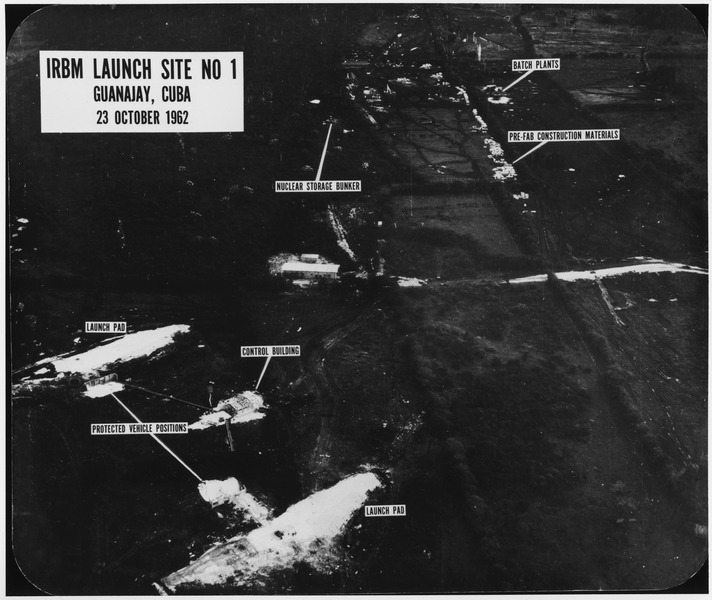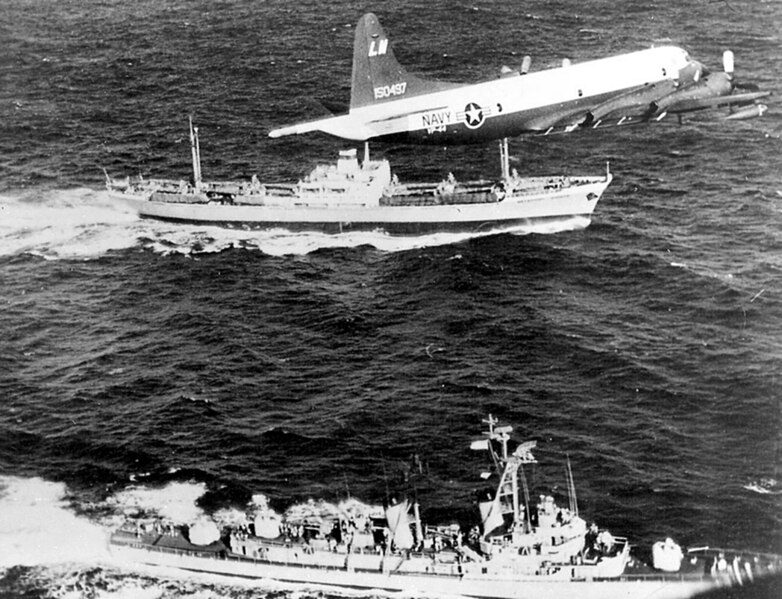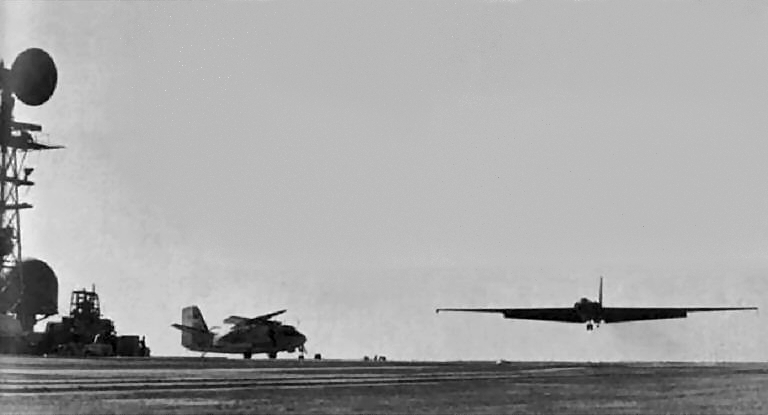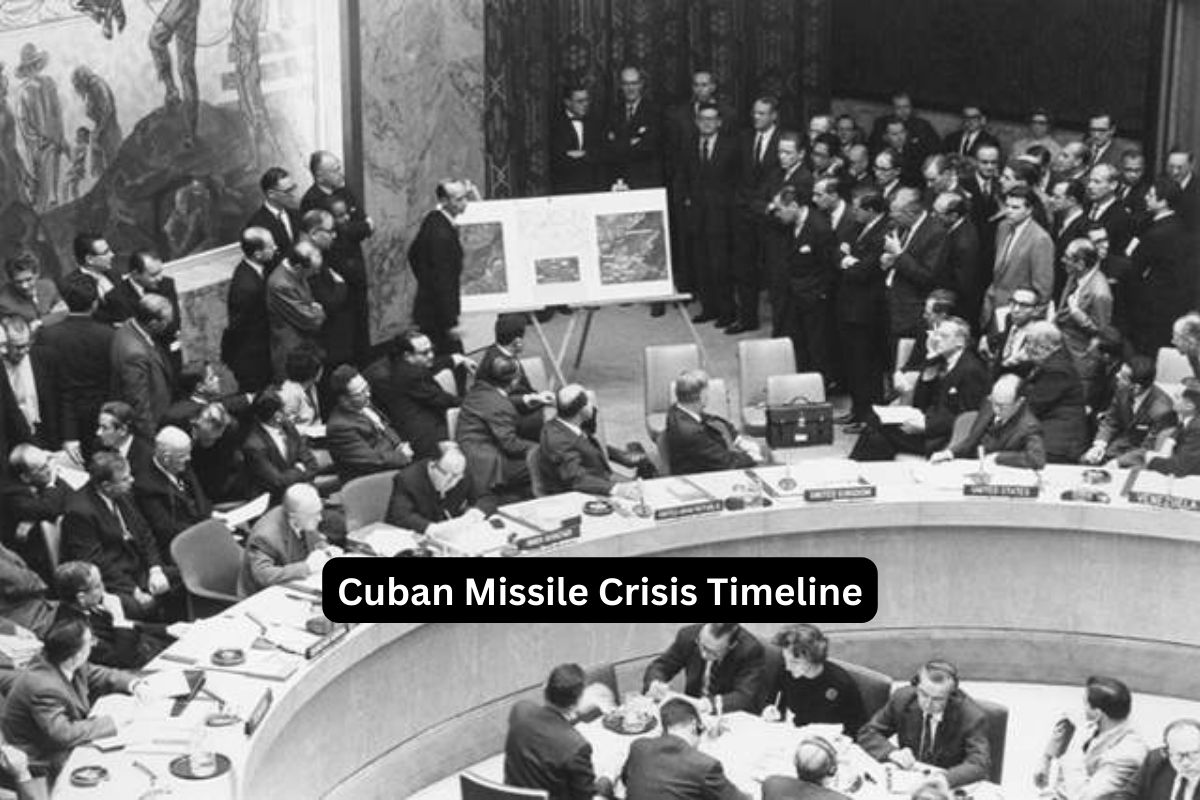The Cuban Missile Crisis of October 1962 stands as one of the most perilous episodes of the Cold War era, where the world teetered on the brink of nuclear catastrophe.
Spanning a tense thirteen days, this confrontation between the United States and the Soviet Union over the deployment of Soviet missiles in Cuba brought the world to the closest it had ever been to nuclear war.
This article delves into the intricacies of the crisis, examining the events leading up to it, the pivotal decisions made by world leaders, and the eventual resolution that averted disaster.
It highlights the importance of communication, negotiation, and compromise in diffusing international crises and underscores the enduring lessons learned from this critical moment in history.
| Date | Event |
|---|---|
| October 14, 1962 | U.S. reconnaissance aircraft take photographs of Soviet missile installations in Cuba. |
| October 16, 1962 | President John F. Kennedy is briefed about the discovery of the missiles in Cuba. |
| October 22, 1962 | President Kennedy addresses the nation in a televised speech, revealing the presence of Soviet missiles in Cuba and announcing a naval blockade. |
| October 24, 1962 | Soviet ships carrying missiles approach the blockade line, escalating tensions. |
| October 26, 1962 | Soviet Premier Nikita Khrushchev sends a letter proposing a deal to President Kennedy, offering to remove missiles from Cuba in exchange for certain assurances. |
| October 27, 1962 | A U.S. U-2 spy plane is shot down over Cuba, escalating tensions further. |
| October 28, 1962 | Khrushchev agrees to remove the missiles from Cuba in exchange for Kennedy’s assurances. |
| October 29, 1962 | Soviet ships carrying missiles begin to withdraw from Cuba. |
| November 20, 1962 | The Cuban Missile Crisis officially ends as the last Soviet missile is removed from Cuba. |
Timeline of the Cuban Missile Crisis
October 14, 1962: U.S. reconnaissance aircraft take photographs of Soviet missile installations in Cuba
U.S. reconnaissance aircraft take photographs of Soviet missile installations being constructed in Cuba. The discovery of these missile sites triggers immediate concern and alarm within the U.S. government and military intelligence circles.
Also Read: Facts About the Cuban Missile Crisis
Intelligence reports are analyzed to determine the nature and extent of the threat posed by the presence of Soviet missiles in Cuba.

October 16, 1962: President John F. Kennedy is briefed about the discovery of the missiles in Cuba
President John F. Kennedy is briefed in detail about the discovery of the missiles in Cuba. The intelligence reports confirm the presence of medium-range ballistic missiles (MRBMs) and intermediate-range ballistic missiles (IRBMs) capable of carrying nuclear warheads.
Also Read: Timeline of Cuba U.S. Relations
This revelation sparks urgent discussions among Kennedy’s advisors regarding the appropriate response to this grave threat to U.S. national security.
Options under consideration include military strikes on the missile sites, diplomatic negotiations with the Soviet Union, and implementing a naval blockade to prevent further Soviet shipments to Cuba.
October 22, 1962: President Kennedy addresses the nation in a televised speech, revealing the presence of Soviet missiles in Cuba and announcing a naval blockade
President Kennedy addresses the nation in a televised speech, revealing the presence of Soviet missiles in Cuba and announcing a naval blockade of Cuba to prevent further missile shipments.
In his address, Kennedy characterizes the situation as a “clear and present danger” to the security of the United States and declares that the U.S. will not tolerate the deployment of offensive nuclear weapons in Cuba.
The announcement of the naval blockade signals a significant escalation in the confrontation between the United States and the Soviet Union, bringing the world to the brink of nuclear conflict. The speech triggers intense international scrutiny and apprehension as global attention focuses on the unfolding crisis in the Caribbean.

October 24, 1962: Soviet ships carrying missiles approach the blockade line, escalating tensions
Soviet ships carrying missiles approach the blockade line set up by the United States around Cuba. Tensions soar as the world watches to see how both superpowers will react.
The United States is prepared to enforce the blockade, while the Soviet Union faces a critical decision on whether to challenge it. Military forces on both sides are on high alert, and there’s a palpable sense of uncertainty and apprehension as the standoff unfolds.
October 26, 1962: Soviet Premier Nikita Khrushchev sends a letter proposing a deal to President Kennedy
Soviet Premier Nikita Khrushchev sends a letter to President Kennedy, indicating a willingness to engage in negotiations to resolve the crisis peacefully.
In the letter, Khrushchev suggests the possibility of a diplomatic resolution that would involve the removal of Soviet missiles from Cuba in exchange for assurances from the United States, such as a commitment not to invade Cuba and the removal of U.S. missiles from Turkey.
This communication marks a pivotal moment in the crisis, offering a glimmer of hope for a peaceful resolution to the perilous standoff.

October 27, 1962: A U.S. U-2 spy plane is shot down over Cuba, escalating tensions further
The situation reaches a critical juncture when a U.S. U-2 spy plane is shot down over Cuba by a Soviet surface-to-air missile. The pilot, Major Rudolf Anderson, tragically loses his life in the incident.
The downing of the U.S. aircraft intensifies the already heightened tensions and raises fears of a direct military confrontation between the United States and the Soviet Union. Both sides are acutely aware of the potential for escalation and the catastrophic consequences of any misstep.
October 28, 1962: Khrushchev agrees to remove the missiles from Cuba in exchange for Kennedy’s assurances
President Kennedy carefully considers Khrushchev’s letter and responds favorably, expressing willingness to negotiate a resolution to the crisis.
Kennedy agrees to Khrushchev’s proposal in principle, offering assurances that the United States would not invade Cuba and, while not explicitly stated, a commitment to remove U.S. missiles from Turkey at a later date.
This response signals a significant shift toward a peaceful resolution and sets the stage for further negotiations between the two superpowers.
October 29, 1962: Soviet ships carrying missiles begin to withdraw from Cuba
Soviet ships carrying missiles begin to withdraw from Cuba, marking the first tangible sign of de-escalation in the crisis. The removal of the missiles is a critical step toward diffusing tensions and restoring stability in the region.
However, both sides remain cautiously vigilant as they navigate the delicate process of disengagement and seek to avoid any actions that could reignite hostilities.
November 20, 1962: The Cuban Missile Crisis officially ends as the last Soviet missile is removed from Cuba
The Cuban Missile Crisis officially comes to an end as the last Soviet missile is removed from Cuba. With the successful resolution of the crisis, the world breathes a collective sigh of relief, having narrowly averted the threat of nuclear war.
The resolution of the crisis is widely hailed as a triumph of diplomacy and crisis management, demonstrating the importance of communication, negotiation, and compromise in resolving international conflicts.
The Cuban Missile Crisis leaves a lasting legacy, prompting both the United States and the Soviet Union to reevaluate their strategies and policies to prevent similar crises in the future and to explore avenues for arms control and disarmament.
